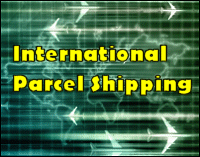
OK, at least we can make it quick. As your business is finding international markets for its products and goods, one challenge is providing the right documents for international shipments. International documents are not really like any other paperwork normally produced in a business. Even for those who regularly ship internationally, completing the customs forms can still be subject to errors and take significant time. And there are several decisions to be made, sometimes with each package and order.
First, make sure you are allowed to export your products to the country you want to ship to, and that the destination country is allowed to import the product. For example, if your company makes chocolate and you receive an order from Mexico, you will need prior authorization from the Mexican government to ship it there. It’s not just products that are subject to customs payments. Want to mail advertising materials to Australia? Duty may be levied on catalogs, price lists, circulars, and all advertising introduced into Australia through the mail, regardless of the class of mail used. Plus there are product classifications that must be correct or your shipment might be charged too much duty or rejected altogether. The international mail manual at the US Post Office web site has detailed information, by country, about product and shipping conditions and restrictions through the Post Office.
After you know that you are allowed to ship your items and you are sure you have the correct packaging, next you have to decide which carrier will deliver your packages. The Post Office and the traditional package carriers are all competing for international business, which they see as a growth area. This is where you focus on delivery options, price and expected service quality. The carrier you choose can determine the type of international document(s) needed. For merchandise, a commercial invoice is the normal document for carriers like UPS and FedEx. The Post Office has its own merchandise forms, the 2976 and 2976A. A certificate of origin may also be needed to show the source of the products, not just their destination.
When shipping documents are required, your shipping system may be able to help prepare these necessary documents. Our CPS(TM) shipping software makes international shipping easy. CPS helps prepare the 2976 and 2976A forms for the USPS as well as commercial invoices and certificates of origin, including the NAFTA certificate of origin. CPS will store your product info in its own data table or use product information directly from your data tables. CPS also sends the customs data to the carriers to meet their requirements. All of this helps in the smooth delivery of your packages.
Finally, the fuel surcharge from some carriers can really impact the cost of your international shipping. It’s not probably not news that international shipping costs more than shipping to domestic destinations. What is different is the fuel surcharge, which is normally significantly higher for international shipping than for domestic ground shipping. Your shipping system should help with getting the best price for each package you ship. Our CPS shipping software can include the fuel surcharge when it is calculating rates so you can avoid the nasty surprise that a double digit percentage cost increase can bring.
Learning what’s needed for international shipping can open up new markets and is definitely worth the effort. Next time we will look in a little more detail at the different forms and some international shipping terms. For information about CPS, visit our web site at www.HarveySoft.com.

